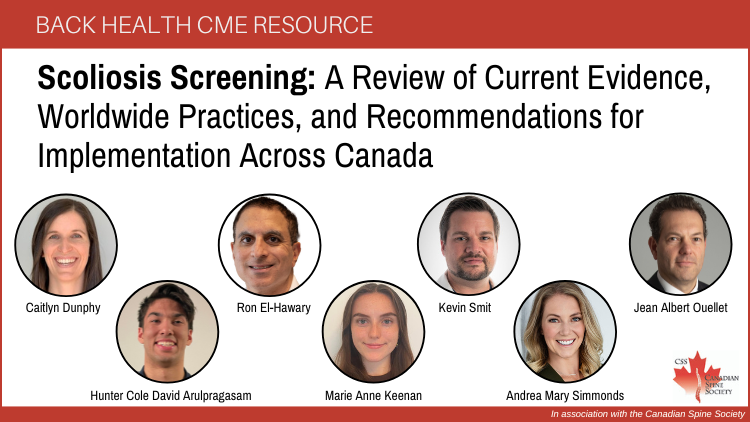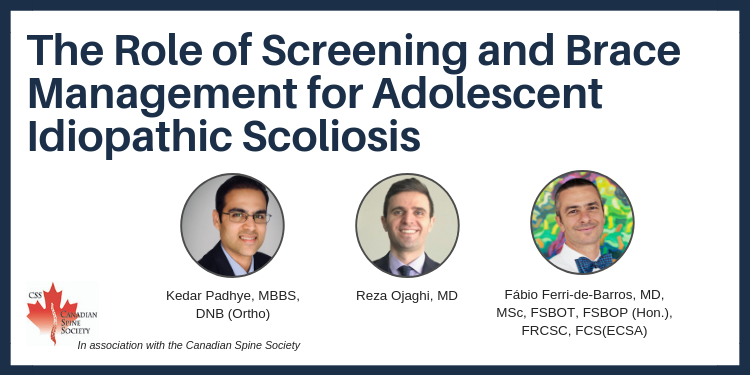1BC Children’s Hospital Orthopaedic Spine Clinic.
2University of Victoria, Research Student, Department of Orthopaedic Surgery, BC Children’s Hospital.
3University of Toronto, Research Student, Department of Orthopaedic Surgery, BC Children’s Hospital.
4McGill University Health Centre/ Shriners Hospital for Children - Canada.
5Pediatric Orthopedic Surgeon, CHEO, Associate Professor, Faculty of Medicine, University of Ottawa, Surgeon Scientist, CHEO Research Institute.
6Professor of Surgery (Orthopedics, Neurosurgery) Professor of Biomedical Engineering, Faculty of Medicine, Dalhousie University Chief of Pediatric Orthopedic Surgery, IWK Health.
7 Paediatric Spine & Orthopaedic Trauma Surgeon, British Columbia Children’s Hospital Clinical Assistant Professor, UBC Department of Orthopaedics.



